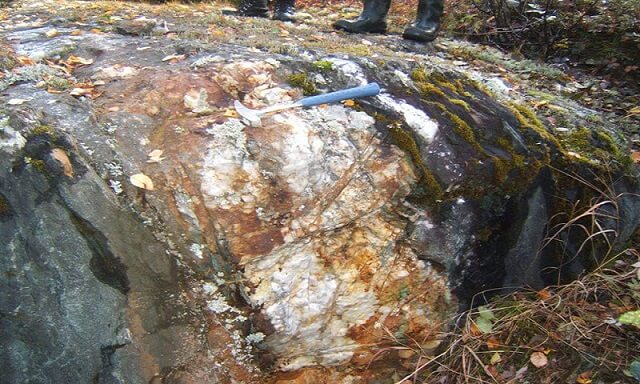Drill Core Sampling
The advantages of obtaining core samples that provide a visual record of the rocks and ores sampled and at the same time furnish samples for assay have been pointed out under the caption Exploration by Drilling. The diamond drill, which employs either carbons or bort as cutting media, has been the type of core drill […]
Ore “Rock” Face Sampling
Face sampling is the cutting of pieces of ore and rock from exposed faces of ore and waste. The faces may be natural outcrops or faces exposed in surface trenches and pits or in the backs, walls, and floors of development openings and stopes. Face samples may be taken: by cutting grooves or channels of […]
How Much is the Cost of Mining Exploration
In the preceding pages some unit costs of sinking, drifting, cross-cutting, and drilling have been presented, together with a few costs covering entire churn-drilling campaigns. Few figures are available covering the total cost of exploring a property before reaching a decision to develop it for production. However, figures are available covering expenditures for exploration and […]
Exploration Drilling
Drilling is employed extensively, either as the principal exploratory method or to supplement exploration by underground and surface workings. Three principal types of drills are employed for this purpose—churn drills, core drills, and hammer drills. In ground too soft to core and in which a churn drill would stick, a rotary drill with a fish-tail […]
Prospecting Lode Gold Deposits

Prospecting for lode deposits begins with a search for mineralized outcrops, the key to the existence of which may often be found in mineralized float (pieces of rock from the lode that have been loosened by weathering and washed downhill). Geologists now generally agree that most valuable mineral deposits have a magmatic origin and, therefore, […]
Prospecting Placer Gold Deposits
Prospecting for placer gold, except perhaps in the case of buried placers, is the simplest form of prospecting. Gold, platinum, and tin are the principal metallic minerals won from placers, but gold (alloyed with varying percentages of silver) is the only metal that has been recovered in commercially important quantities from placers in the United […]
Exploration Drill Sampling Techniques
A brief summary of the methods employed and the costs of prospecting and exploration has been presented in the preceding pages. The primary object of such work, as already stated, is to find ore and furnish information upon which to base estimates of its quantity and grade. Estimates of ore grade are based on the […]
Methods of Mining Metals
This report summarizes mining practices of a large number of metal mines in the United States and foreign countries. The adaptation of mining methods best suited to the various natural conditions in mines is discussed, and comparative costs are presented. The basic data—gathered in the field by Bureau of Mines engineers and consultants in cooperation with […]
Types of Underground Mining Method Comparison
In any discussion of Methods of Underground Mining Comparison, one is repeatedly confronted with the difficulty of dealing with so many variable conditions. It is not an exact science and in the choice of a method each varying factor has a certain weight, which, in many cases, experience alone can determine. In mathematical terms, it is a […]
